A CAMPANHA
PROPOLAR 2012-2013
Novembro de 2012 a Março de 2013
PROPOLAR 2012-2013
Novembro de 2012 a Março de 2013
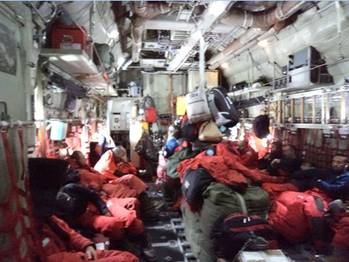 The C130 The departure. The campaign is almost finished. On 4th February at 7:00, we (a group of 26 researchers and technicians) start our returning trip from MZS. We went to McMurdo (1:30 hours with the twin-otter); at 10:30 we embarked on an American C130. 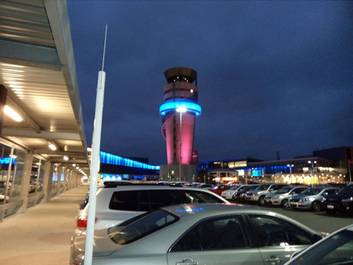 Christchurch airport by night After ‘only’ 9:30 hours of fly we reached Christchurch (NZ)….and finally the first real night after 1 month. For this year the work in Antarctica is finished…now we have to start to think to the 2013/14 expedition…maybe I’ll take part also to the next to install more devices to improve the measurements capabilities of the new instrument. Daniele Bortoli Lasts checks. We have packed everything, all the instruments are working and most of the biological samples are in conditions to be sent to Italy for the deepest analysis. For the first time this year thanks to new installed technology, it will be possible to control the instruments through the internet address of the different systems directly from everywhere in the world. This facilities is still in testing phase, so it's not free accessible for each one!!! Maybe in the next future !!! Unfortunately, at lunch time, the expedition leader communicated to the people leaving Antarctica on the 2nd of February (26 person including me) the impossibility to perform the transfer to McMurdo (as it was 25 days ago for the arrival) since the weather conditions were not good. So we have to wait. Probably for 2/3 days.
Daniele Bortoli For kindly concession of the Italian Program for Antarctic Research (PNRA) 28 Jan Confirmation from the Rescue 30 Jan It's almost time to leave MZS (the trip is foreseen for the 2nd of Feb), so today I went to remove the radiometer (mod MFR7) installed on the roof of one of the container at the Icaro camp. due to the snow of 2 days ago, I had to go to the camp with the helicopter. There was a little bit of wind, but everything was done in two hours. During the 'nights' without seminars at MZS, beside the always big quantity of food, cakes and chocolate in the canteen there are different activities that can be done: watching recorded movies on the TV, go out to walk a little near the station or....work, so I was able to process the spectral data measured by the GASCOD in 2012. The analysis of the seasonal variation of the nitrogen dioxide (NO2) total content. 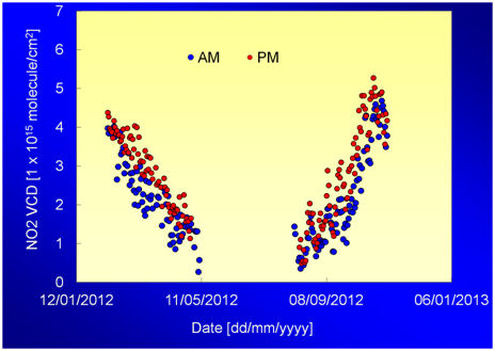 Figure - NO2 vertical columns for 2012 at MZS retrieved from the GASCOD spectral measurements. Daniele Bortoli For kindly concession of the Italian Program for Antarctic Research (PNRA) 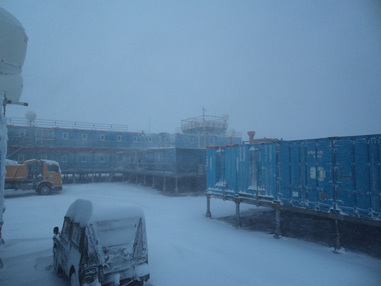 For the third Saturday since when I was here is snowing. More than 80cm of snow in less than 24 hours. The main problems arise two day after, when all the personnel was involved in order to remove the snow from the most used Daniele Bortoli For kindly concession of the Italian Program for Antarctic Research (PNRA)" Press release from Kenn Borek Air Ltd. On Friday evening a C130 made a visual contact with the overdue aircraft in Antarctica. The lost twin otter impacted a steep snow ice covered mountain slope. No signs of activities are evident in the area and it appears that the impact was not survivable.
Daniele Bortoli For kindly concession of the Italian Program for Antarctic Research (PNRA) A very bad news at MZS. The contact with a twin otter flying from SouthPole to McMurdo is lost. On board 2 pilots and a technician. Due to the bad whether condition any rescue has to be delayed at least of 24h.
Daniele Bortoli For kindly concession of the Italian Program for Antarctic Research (PNRA) This year every Monday and Thursday a seminar is done by the personnel (not only the scientific, but also the logistic people) in order to inform the participants of the main activities of the other members of the expedition. This year I didn't present anything, since last year (XXVII expedition 2011/2012) I gave a speech regarding "Minor atmospheric compounds -
trace gases and ozone hole at high latitudes: how, when and why!!!", that, as suggested by the title, covered many aspects of the ozone and the chemically related compounds here at high latitudes. Daniele Bortoli For kindly concession of the Italian Program for Antarctic Research (PNRA) 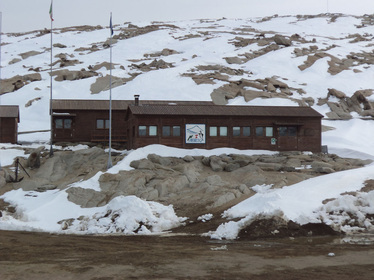 The guys never went to Antarctica have to be introduced in the Antarctic society with an examination to be performed in front of the king and the queen of the station (this is a new tradition, since some years ago the main characters were the god of the oceans - Neptune - and his wife...but the result is the same....very funny) This 'ceremony' is called 'spinguinamento' and it take place in a very nice chalet build near the station: the 'Pinguinattolo' .Figure 1 - The Pinguinattolo. Daniele Bortoli For kindly concession of the Italian Program for Antarctic Research (PNRA). Mine activities are carried out mainly in the station, since I have to install the new spectrometric system that will work in parallel with the old GASCOD for at least 1 year. With the help of the logistic staff I was able to setup the new observational system in a few days and the photos show the result. For kindly concession of the Italian Program for Antarctic Research (PNRA) The zenith sky scattered radiation is collected by the VELOD (VErtical LOoking Device) installed on the roof of the container, and with an optical fibre the signal reaches the main body of the system (the spectrometer) and after the dispersion of the light beam with a holographic grating the spectrum is collected by the CCD sensor and stored in the PC. These data will be then processed with the Differential Optical Absorption Spectroscopy in order to retrieve infos regarding the total column and vertical distribution of some atmospheric tracers as ozone and nitrogen, bromine, iodine and chlorine oxides. All these last compounds are involved in the heterogeneous ozone chemical cycles. I was hoping to arrive here, to start to make measurements immediately, instead, as usual, mechanical, optical and electronic problems arise. Practically I had to perform once more the optical alignment and calibration of the spectrometer and I solved some troubles in the (please believe me, it was very complicated) electronic unit managing the optical and mechanical unit. Now I have 'only' to make the necessary modifications to the management software I develop along the last years, for similar (but not equal) equipments. 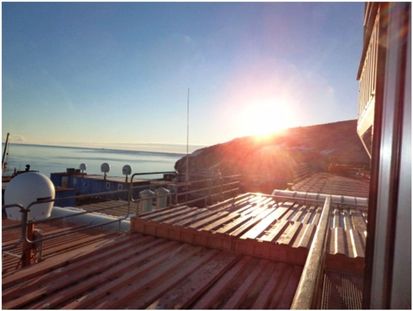 For kindly concession of PNRA In the evening, we had the opportunity to try Antarctica as it is!!!!! At 22:30 the power supplies of the station were turned off in order to assembly a new part of the electric net, and we stay in the "dark" for one night. Effectively the main problem was not the dark (the photo was taken at 2 on the 'night'), but the temperature. Due to a very strong wind (called katabatic wind) the temperatures in the station fall down from 18º of about 5º in a very short time. fortunately the energy came back at 4 in the morning. 'Sunrise' at the Mario Zucchelli Station at about 3:00 in the 'morning'. It's not a real sunrise since the sun never went below the horizon, but it was only hide for some minutes by the rock peak Daniele Bortoli, Mario Zucchelli Station, Antártica, 16-01-2013 Around Mario Zucchelli Station there are a lot of scientific camps: "Oasi", for the magnetic field and seismological measurements; "Campo Antenne" where some antennas are installed for different aims and the principal is to ensure the radio communications between the control operations (coordinating all the activities) and the scientific and logistic personnel; "Campo Meteo", where the meteorological observations are performed; "Campo Faraglioni" and "Campo Icaro", placed in a clean zone at 3 km from the station and used for chemical and for solar radiation measurements. I have to go to Campo Icaro every 2/3 days in order to check a shadow band radiometer for the measurements of the global, and diffuse solar radiation.
When the meteo conditions are good is always a pleasure to leave the station for a while (2/3 hours) for a walk in the middle of ...nothing. Daniele Bortoli, Mario Zucchelli Station, Antártica, 11-01-2013 |
Consulta de posts por projeto
Tudo
Consulta de posts por ordem cronológica
Julho 2013
|